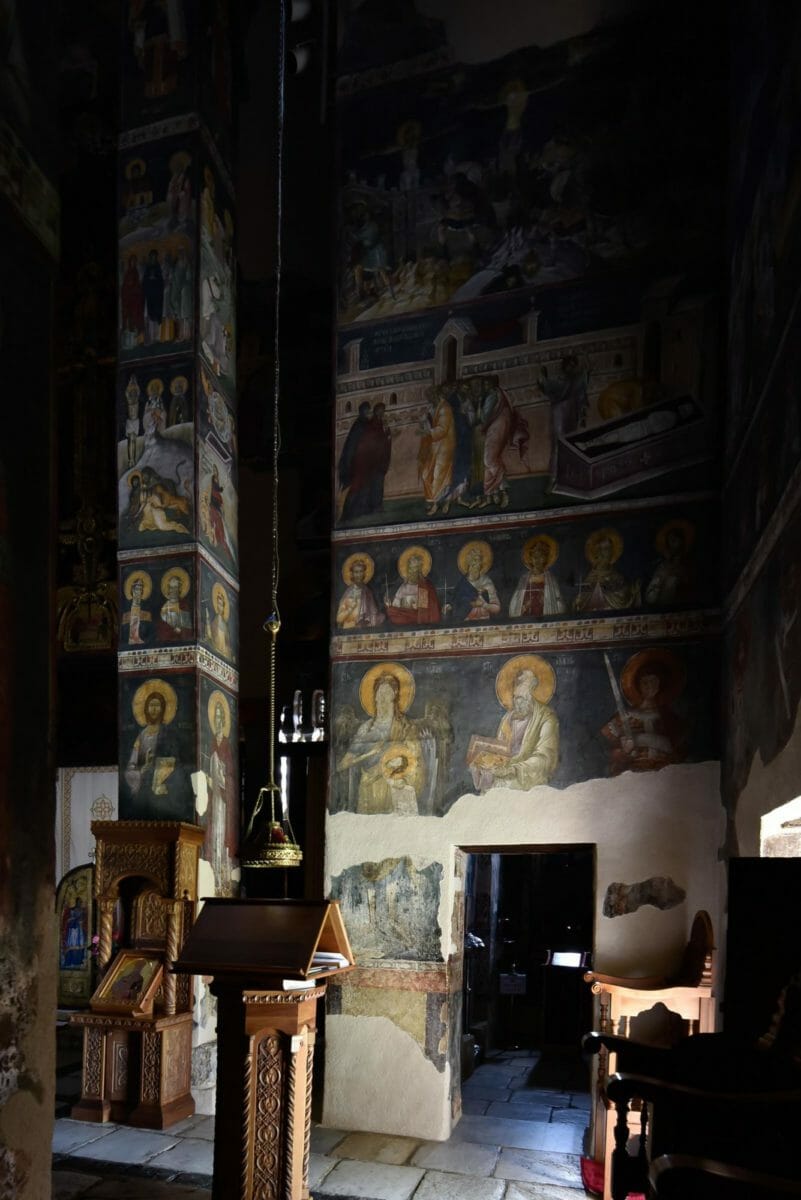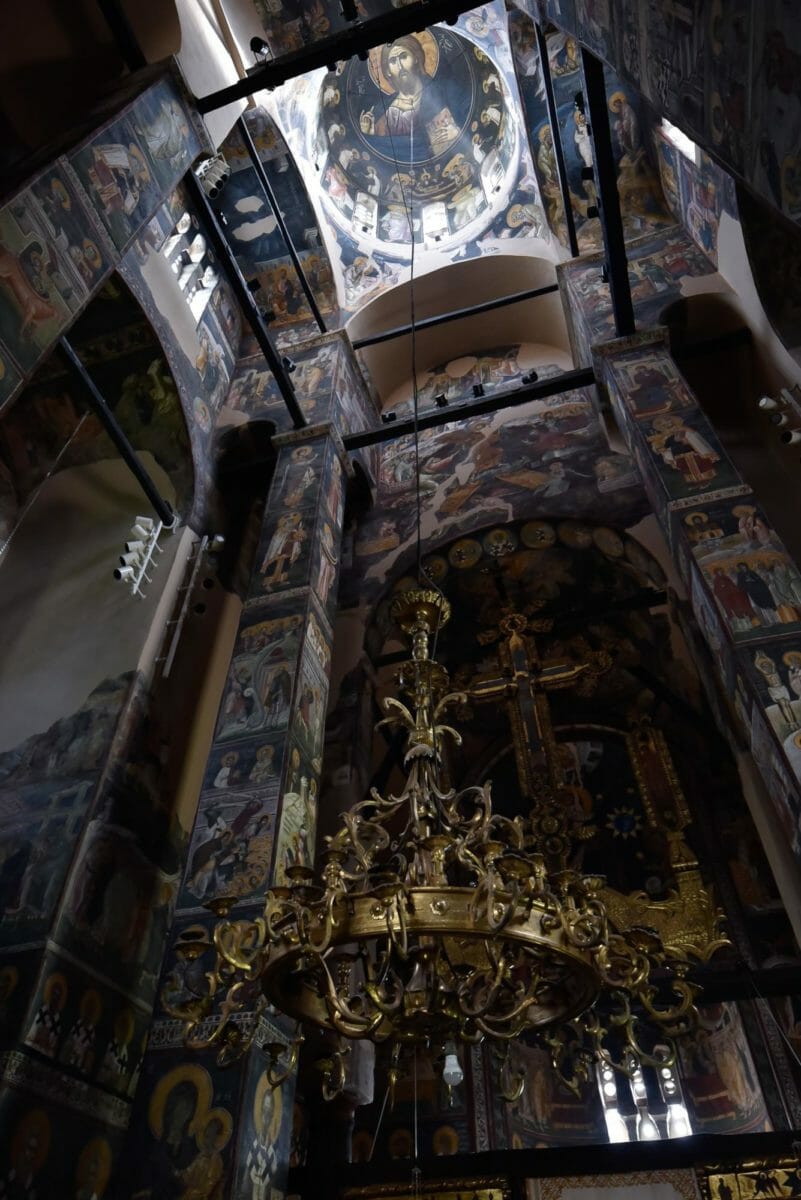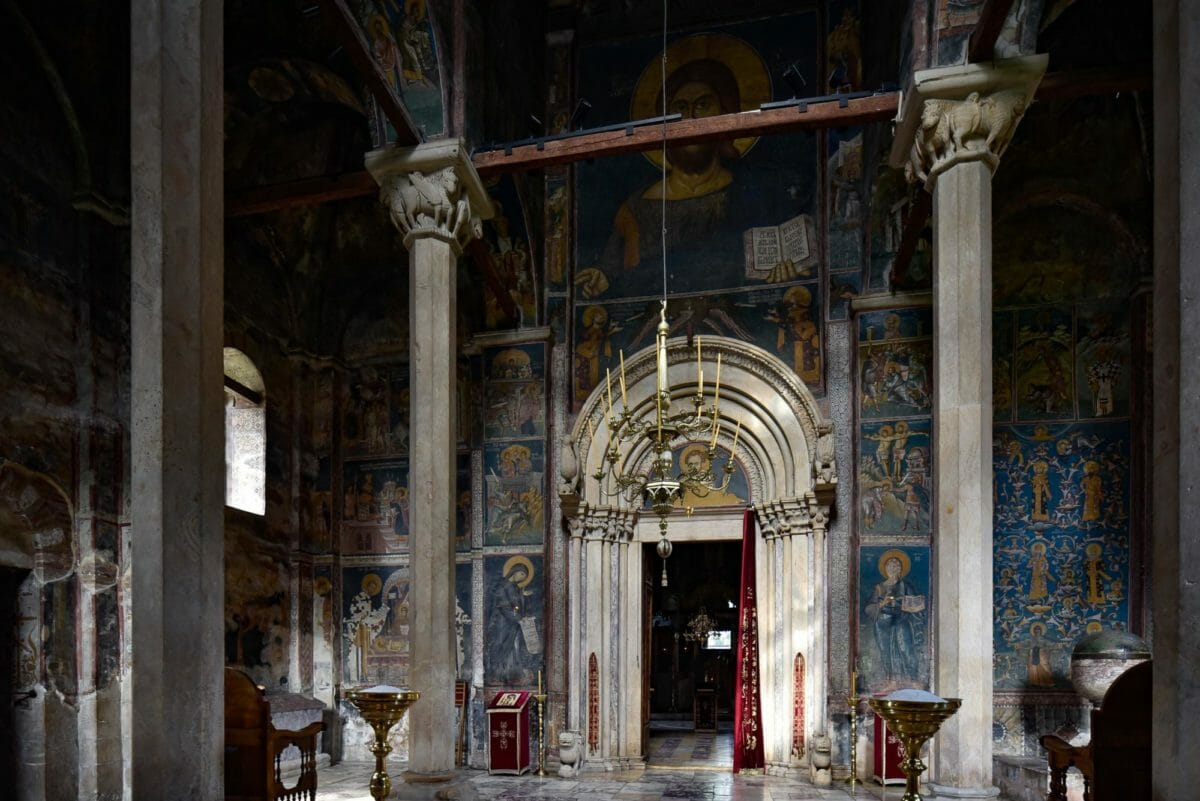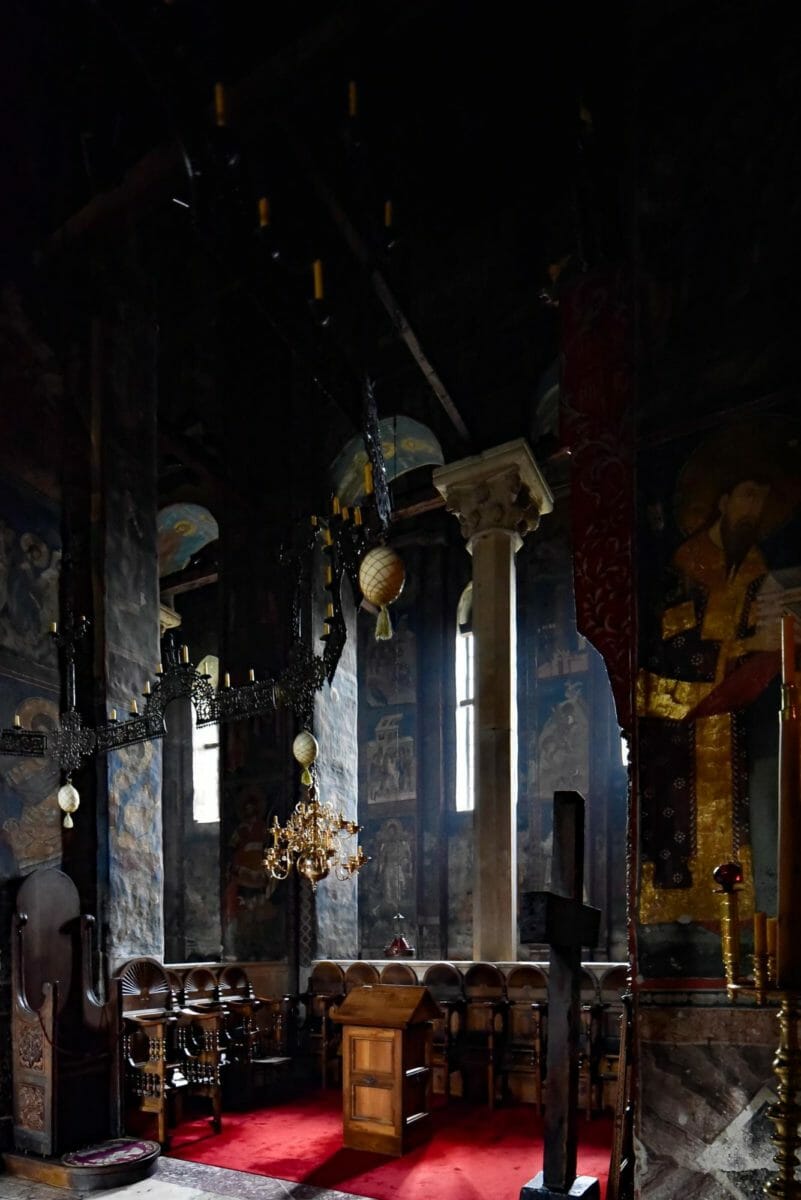Similar Posts
Continuing my photojournalism series highlighting Balkan churches, this post will feature wide-angle interior portraits of the three great monastery churches of the Kosovo and Metohija region.
Peć, Gračanica, and Dečani are monuments of unequalled importance, astonishing for their architecture and frescoes, and for their incredible state of preservation in this most embattled region. Because few tourists visit the area, and because the immense dark interiors are difficult to photograph without special equipment, it is not easy to find good architectural photography of these monuments.
Because these churches are famous for their frescoes, they are nowadays usually experienced with electric spotlights illuminating the walls and ceiling. Although this lighting flatters the individual frescoes, it completely kills the natural play of light and shadow for which the architecture was designed. I arranged special permission to photograph these churches with the electric lights turned off. My pictures convey the dark and introspective ethos of these interiors in their natural state.
Modern people will likely ask – What was the point of painting hundreds of fresco compositions in these tall dark interiors, when most of them are lost in the shadows? Our experience, with the lights turned off, was as follows:
Upon entering these churches, one initially perceives only the most brightly illumined elements – the dome, the iconostasis, perhaps a frescoed saint here or there caught by a sunbeam. But in time, as the eyes adjust to the dark, more becomes visible. One by one, painted figures emerge from the darkness, and shadows transform to a vision of heaven. Over the course of the day, as the sunlight revolves around the space, and as the lampadas are lit in the evening, new compositions come into focus and others fade from view. The space is alive, eternal but never static. It is an environment in which a monastic, who spends much of his life attending church, will never be bored with the visual monotony of seeing everything all at once. Instead, he will find a fresh experience unfolds over the course of hours and seasons – new compositions, little noticed before, suddenly catching his attention.
Please enjoy these images, and take note of how the darkness makes the light look so much richer – how the light can call attention to what’s important only because of the vast darkness surrounding it. Blessed were those who experienced the beauty of architecture before electric spotlights!

Dečani Monastery, 1327-1331 – The Iconostasis – the only medieval templon screen with its original icons in the world.
This post is part of a series. Previous posts: (Portraits of Light and Shadow in Balkan Churches – Part 1: Serbia)
If you enjoyed this article, please use the PayPal button below to donate to support the work of the Orthodox Arts Journal. The costs to maintain the website are considerable.





























Magnificent photos! And being there was even better!
Beautiful photographs. You can feel the prayers within
Many thanks for the great photos
Having lived in Sofia and had the opportunity to visit many of these churches in surrounding countries, I must saw walking in to one is so awe inspiring. At the time I was not studying icons. I wish I had been. What a wonderful experience you have had. Magnificent.
Truly Glorious!
I visited these churches and examined the beauty of their icons. At the time they were being restored. They truly beautiful. The church at Pec was re-painted by women, and it was beautiful.
thank you for this education in architectural mystery and holiness.
these churches seem like living organisms … a new way of experiencing the action and movement of the Holy Spirit.
This is truly breathtaking. Thank you for sharing this with us. The deep devotion, humble hearts, strong faith and the history these photographs showcase and the article captures, has been a unique pleasure to view and read.